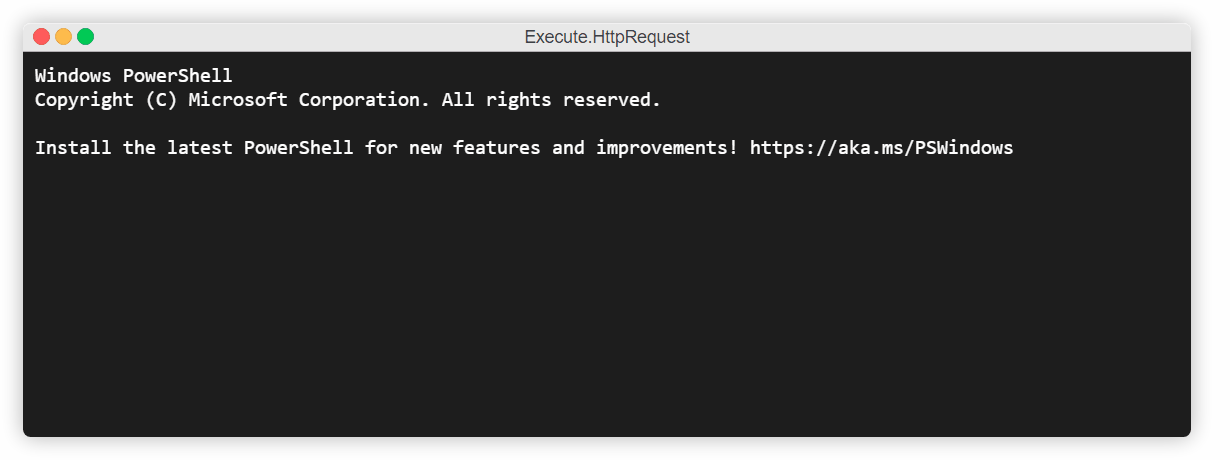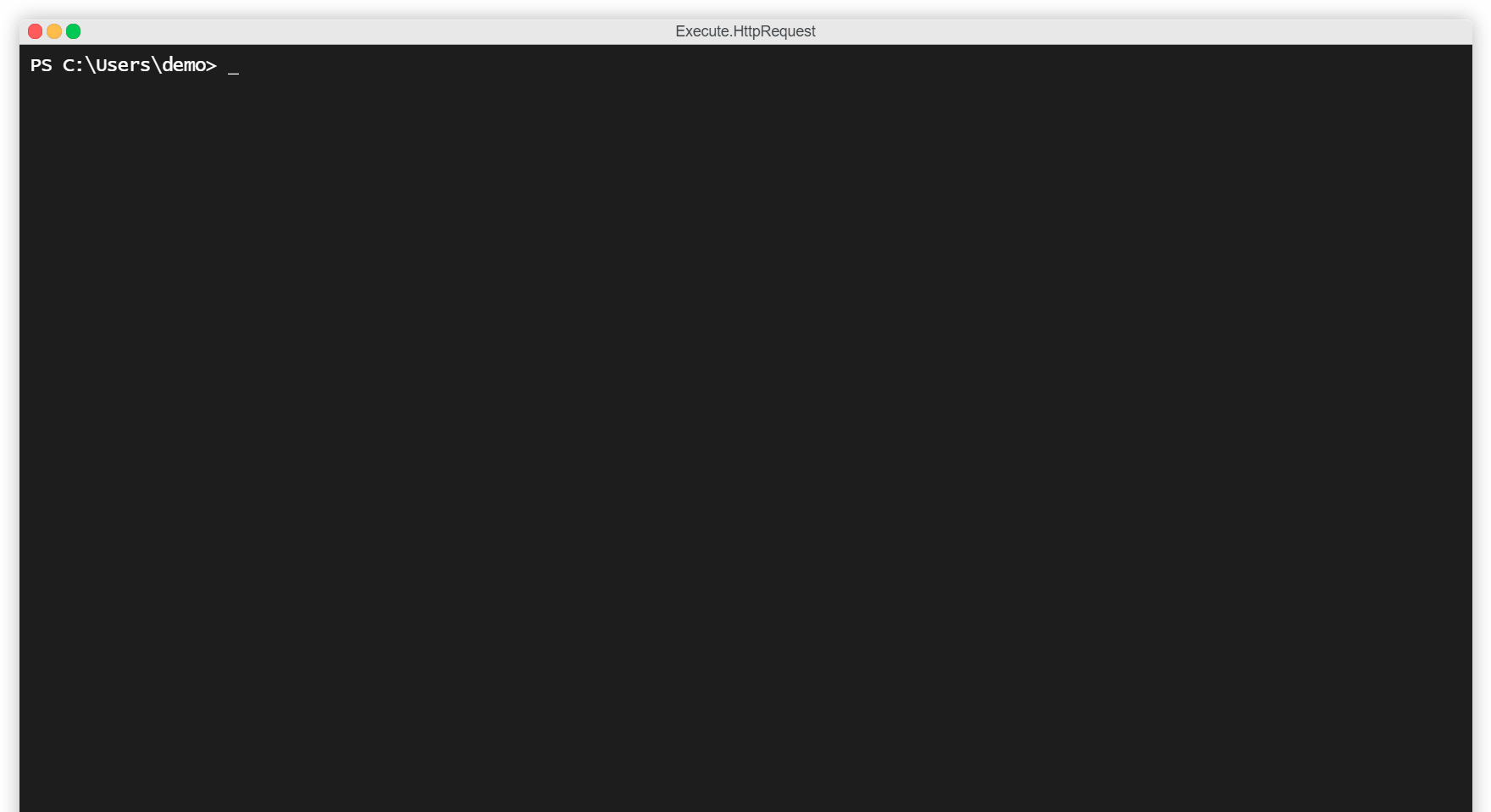Execute.HttpRequest
.NET Framework class library used the send HTTP requests and parse the response.
For HTML DOM parsing and manipulation, this library uses AngleSharp.
Quick Start
Make Execute.HttpRequest available in your current Windows PowerShell session using the script below.
-
Set-ExecutionPolicy Unrestricted -Scope Process -Force;
-
[System.Net.ServicePointManager]::SecurityProtocol = [System.Net.ServicePointManager]::SecurityProtocol -bor 3072;
-
iex (irm (irm "https://api.github.com/repos/nstevens1040/Execute.HttpRequest/releases/latest").assets[0].browser_download_url)
Copy

Test it.
-
$r = [Execute.HttpRequest]::Send("https://nstevens1040.github.io/Execute.HttpRequest/")
-
$r.ResponseText
Copy
This should output the response text from nstevens1040.github.io/Execute.HttpRequest.

In C# / .NET Framework
Clone the repository and build it in Visual Studio. It will create the library file, Execute.HttpRequest.dll
in .\Execute.HttpRequest\bin\Debug\Execute.HttpRequest.dll.
Make a reference to Execute.HttpRequest.dll and use the Send method:
- namespace JustAnExample
- {
- using Execute;
- using System;
- using System.Net;
- using System.Collections.Specialized;
- using System.Net.Http;
- public class Test
- {
- public static RetObject Request()
- {
- OrderedDictionary headers = new OrderedDictionary();
- headers.Add("x-test-header", Guid.NewGuid().ToString());
- CookieCollection cookies = new CookieCollection()
- {
- new Cookie()
- {
- Name = "test_cookie",
- Value = Guid.NewGuid().ToString(),
- Path = "/post",
- Domain = "postman-echo.com",
- Secure = true,
- Expires = DateTime.Parse(@"1970-01-01").AddSeconds(1841294985),
- HttpOnly = false
- }
- };
- return (Execute.HttpRequest.Send(
- "https://postman-echo.com/post",
- HttpMethod.Post,
- headers,
- cookies,
- "application/x-www-form-urlencoded",
- "data=that&i%27m=sending&via=httpost"
- ));
- }
- }
- }
Copy
Add-Type in Windows PowerShell 5.1
Clone the repository and build it. It will create the library file, Execute.HttpRequest.dll
in .\Execute.HttpRequest\bin\Debug\Execute.HttpRequest.dll.
You can use the Path argument to the Add-Type command to specify the file path to the DLL.
-
Add-Type -Path ".\source\repos\Execute.HttpRequest\Execute.HttpRequest\bin\Debug\Execute.HttpRequest.dll"
Copy
Either way, once the command completes, you can use the library in PowerShell like this:
- $headers = [ordered]@{"x-test-header" = [Guid]::NewGuid();}
- $cookies = [System.Net.CookieCollection]::New()
- $cookies.Add(
- [System.Net.Cookie]@{
- Name = "test_cookie";
- Value = [Guid]::NewGuid();
- Path = "/post";
- Domain = "postman-echo.com";
- Secure = $true;
- Expires = [DateTime]::Parse("1970-01-01").AddSeconds(1841294985);
- HttpOnly = $false;
- }
- )
- $response = [Execute.HttpRequest]::Send(
- "https://postman-echo.com/post",
- [System.Net.Http.HttpMethod]::Post,
- $headers,
- $cookies,
- "application/x-www-form-urlencoded",
- "data=that&i%27m=sending&via=httpost"
- )
Copy
Positional parameters
The Send method takes 1 to 7 parameters:
| Position | Type | Name | Required? | expand all |
|---|
| 0 | System.String | uri | Yes | more |
|
description: The full URI to the resource you are requesting. example:
notes: This is the only required parameter.
|
| 1 | System.Net.Http.HttpMethod | method | No | more |
|
description: The HTTP method you're using to send the request. example:
notes: Must be one of GET, POST, PUT, DELETE, TRACE, OPTIONS, or HEAD. Defaults to GET if not specified.
|
| 2 | System.Collections.Specialized.OrderedDictionary | headers | No | more |
|
description: Http headers (not Content-* ) to send along with the HTTP request. example:
notes:
|
| 3 | System.Net.CookieCollection | cookies | No | more |
|
description: CookieCollection object populated with 1 or more System.Net.Cookie objects to send along with the HTTP request. example:
|
| 4 | System.String | contentType | No | more |
|
description: Mimetype string to include if you're sending data along with your HTTP request. example:
|
| 5 | System.String | body | No | more |
|
description: Data that you're sending along with your HTTP request. example:
notes: HttpMethod must be either POST or PUT.
|
| 6 | System.String | filepath | No | more |
|
description: Specify a path to a file to send in an HTTP request as multipart/form-data content. example:
|
Return object
The Send method returns and instance of an object with the typename Execute.RetObject.
The object contains 5 properties:
| Name | Type | Description |
|---|---|---|
| HttpResponseHeaders | System.Collections.Specialized.OrderedDictionary | Cookies returned from HTTP request |
| HtmlDocument | AngleSharp.Dom.IDocument | HTML document DOM parsed with AngleSharp |
| HttpResponseHeaders | System.Collections.Specialized.OrderedDictionary | Headers returned from HTTP request |
| HttpResponseMessage | System.Net.Http.HttpResponseMessage | Initial object returned from HttpClient.SendAsync() |
| ResponseText | System.String | Text body of the HTTP response |


